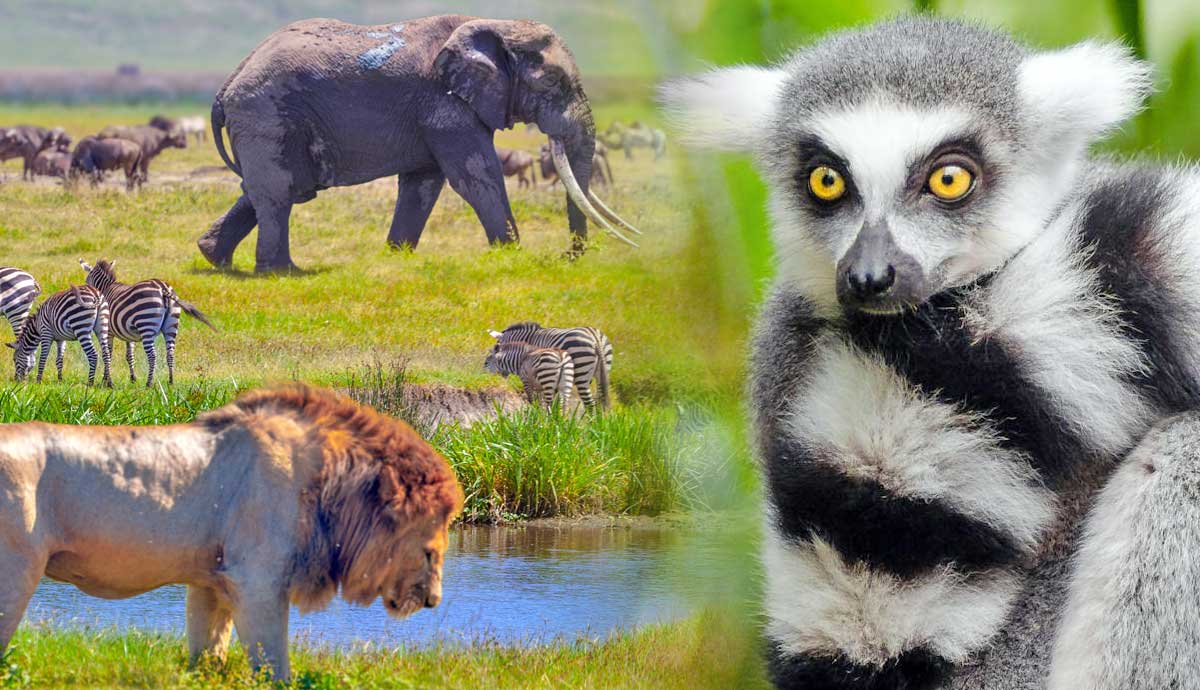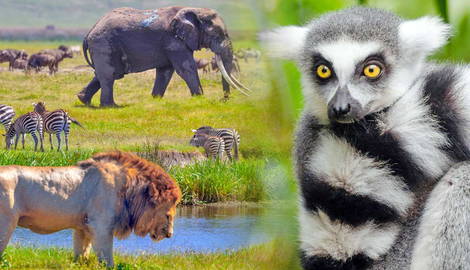
Have you ever wondered how animals got their colors? Or why mosquitoes buzz in our ears? This article explores ancient African myths and folktales that answer these (oftentimes niche) questions.
1. Why Mosquitoes Buzz in Our Ears

We’ve all had those late nights, unable to sleep because a mosquito decided to play the kazoo right next to our ears. A myth from West Africa explains why these insects have their incessant buzz.
The tale goes that Mosquito was telling lies to Iguana, who got so tired of it that he stuffed sticks in his ears. Later, Python tried to greet Iguana, who didn’t hear him or respond. Python got suspicious that Iguana was plotting something and snuck into Rabbit’s den to spy on him. Rabbit obviously panicked, and his frenzied running caused Crow to alert the other animals to the danger. In the chaos that ensued, Monkey snapped a tree branch and one of Mother Owl’s babies fell to the ground and died.

King Lion called all the animals to court to figure out who the culprit was. Monkey blamed Crow, who blamed Rabbit, who blamed Python, who blamed Iguana. When Iguana explained himself, he told all the animals why he had to stuff sticks in his ears. The animals unanimously charged Mosquito with the murder of the owlet. To this day, mosquitoes buzz in our ears to ask if everyone is still angry at them.
2. How Dog Became Our Best Friend

This Angolan myth focuses on the domestication of dogs, and how they became our cherished friends. Long ago in the deep bush, Jackal and Dog lived together as brothers. They hunted together, played together and traveled together. One day, while passing a bustling village, they saw how humans were cooking meat with fire. Jackal wanted fire for himself, so that he and Dog could roast their meat too.
Jackal convinced Dog to sneak into the village to steal the secret of fire, but a woman put a spanner in the works by feeding Dog some delicious scraps. Dog surmised that eating scraps in the village was far easier than roaming the bush with Jackal, where they often went to sleep with empty bellies. To this day, Jackal’s howls can be heard, grieving over Dog’s abandonment. He never learned the secret of fire and is now terrified of it.
3. Why the Sun Rises and Falls

Could you believe that a humble fly is to thank for day and night? In this story from the Congo, a sparrowhawk was tasked with traveling to heaven to find the sun. A fly volunteered to go ahead first in case the great god Yemekonji was plotting a surprise and snuck in to eavesdrop on a divine meeting.
The fly learned that the sparrowhawk would be presented with three parcels, with one containing the sun. Two of the parcels would be colorful but contain nothing, while the third plain parcel would contain the sun. Two previous delegations from Earth failed to find the sun after they chose parcels containing the moon and evening star.
The fly quickly flew back to the sparrowhawk with the news. When the sparrowhawk entered heaven, Yemekonji asked if he was hiding a spy, and was told no. However, Yemekonji knew about the fly, but wasn’t angry and still presented Sparrowhawk with the three parcels. When Sparrowhawk chose the correct one, Yemekonji instructed him to lift the sun high into the heavens, and to tell everyone on Earth that the sun will rise and fall in twelve-hour intervals. Thus, day and night came to be.
4. How Guineafowl Lost His Crest

In Africa, these spotted birds are often seen running across busy roads, and their distinctive calls are a part of daily life. In a story from the Congo, their crestless heads are explained.
In a village of animals, everyone took turns being chief. When it was Lizard’s turn, he was determined to make his tenure unforgettable. He acquired a ceremonial drum, luxurious outfit, and lots of beer for all the onlookers. However, he was still missing a plume for his headdress, and called on Guineafowl to present one.
Guineafowl presented Lizard with feathers of every shape and size, but Lizard was deadset on the crest atop the bird’s head. Reluctantly, Guineafowl allowed his crest to be cut off, leaving his head featherless to this day. He didn’t forget Lizard’s transgression, however, and when it was his turn to be chief, he demanded a hide for a rug. Not just any hide, but one of lizard skin. All the animals in the village agreed that this was a reasonable request, and Lizard lost his skin (and his life) to make a rug for Guineafowl.
5. Why the Lemur Calls

In Madagascar, lemurs are believed to be the ancestors of man. Long ago two lemurs lived together in the forest, but one decided to leave the forest and start cultivating the land. This is how the first human came to be. The lemur who stayed in the forest mourns his brother who went astray; his piercing calls are a testament to his grief.
It is said that lemur calls are so haunting that Portuguese explorers in the late 1500s thought they were hearing the spirits of the dead. At night, they heard howling from the forest and saw piercing eyes looking at them from the trees. In the morning, they saw that the cause of their fright was a family of lemurs.
6. How Things Got Their Colors

The San, an ancient tribe from South Africa, considers the praying mantis the creator. He was married to the hyrax. Their daughter, the porcupine, married Kwammang-a, the San’s primeval ancestor. It is said that the praying mantis fashioned the first eland (antelope) from Kwammang-a’s discarded sandal.
When visiting the eland at night, the praying mantis rubbed down his hide with dark wasp’s honey, which gave him his fawn coloring. Likewise, the praying mantis gave the gemsbok (oryx) light honey, which gave the animal its white and light brown colors. Hartebeest (African Antelope) and Springbok got their red coloring from consuming the honey of young bees. The now-extinct quagga (a member of the zebra family) got its colors from brown honey.
7. Why Rhino Flings His Dung

You read that right. This is a folktale from South Africa that explains why the rhino scatters his dung. When the world was new, Elephant and Rhino got into an argument, which eventually led to a full-blown tussle. While Rhino was able to get a few stabs in, Elephant was much wiser and used his big tusks to defend himself. Rhino had to admit defeat and ran away with massive gashes in his side.
With no way to stich up his wounds, Mrs. Porcupine took pity on him and gave him her sharpest quill. She made him promise to bring it back as it was her only defense against predators.
After clumsily stitching up his wounds, Rhino fell asleep with the quill next to him. When he awoke, he completely forgot about his promise, and only remembered days later when he ran into Mrs. Porcupine. In his panic to remember where he put it, he concluded that he accidentally ate it. What goes in, must go out, and so he kicked up his dung in search of the quill. He still hasn’t found it and continues to search for it in his dung to this day.










